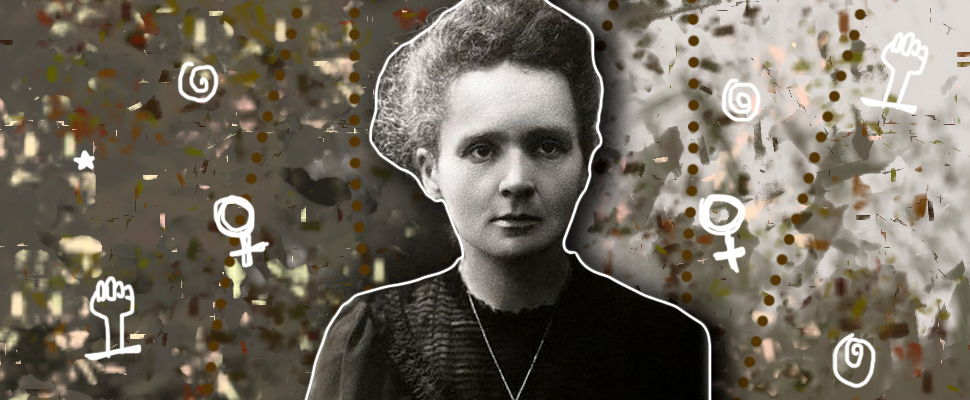5 women in science that have changed the world
We didn´t want to let February pass by without celebrating these five women, whose findings and research have changed the world.

Portrait of Maria Skłodowska-Curie. / Photo: mlahanas.de CC0
The Woman Post | Luisa Fernanda Báez Toro
Listen to this article
Leer en español: 5 mujeres científicas que han cambiado el mundo
Every year, in the month of February, the International Day of Women and Girls in Science is celebrated. For centuries, thousands of women have dedicated their lives to research, but their findings have often been undervalued.
For example, according to The Lancet, women suffer biases against men when applying for research funds, since they are much more likely to be rejected for funding when reviewers are asked to evaluate their skills as researchers, rather than focusing on their proposals.
According to UN Women, unequal access to education, technologies, and leadership positions have steered countless bright female minds away from STEM careers and stalled their progress.
Here are five women scientists who deserve to be celebrated every day of the year:
1. Katherine Johnson. American physicist, space scientist, and mathematician.
As read on SINC, Katherine Johnson, born in Virginia on August 26, 1918, was one of the "human calculators" that helped carry out the Apollo 11 mission to the moon in 1959.
In this project, with her female colleagues, she calculated the precise moment in which the probe had to leave the lunar surface so it could be attached to the service module.
The "human calculators" were a group of African-American women who performed, by hand, all the math calculations that would allow rockets and astronauts to launch into space in the 50s and 60s, a time in which computers were not very reliable.
The calculations were necessary to obtain the takeoff and reentry trajectories of the spacecraft and any error could mean the death of the astronauts.
The story of these women, including that of Katherine Johnson, is told in the book Hidden Figures, also taken to the big screen.
2. Marie Curie. Polish physicist and chemist.
As read on UN Women, Curie's research on radioactivity set the foundations for modern nuclear science, from X-rays to radiation therapy for cancer treatment.
She was the first woman in history to receive a Nobel Prize: that of physics.
As read on Historia, this scientist acquired several cars and portable X-ray machines and created “radiological ambulances”, which saved the lives of many soldiers.
3. Esther Lederberg. American mycorbiologist
Ledeberg, born in 1922, was a pioneer in bacterial genetics. As read on Mujeres con Ciencia, her notable contributions include the discovery of the bacteriophage lambda, the transfer of genes between bacteria by transduction, the development of the plate replication technique and the discovery of the fertility factor.
Also read: All-female crew returned to earth from 'Mars'
4. Tu Youyou. Chinese pharmaceutical chemist.
This Chinese scientist investigated treatments against infections such as malaria, among others, saving thousands of lives. In 2015, in the company of William C. Campbell and Satoshi Ōmura, she won the Nobel Prize in Physiology or Medicine.
Malaria is a parasitic disease that causes death every 60 seconds in Africa. More than 500,000 people die every year from it, according to data from the World Health Organization.
This figure could be even higher if it were not for the work of Tu Youyou and her discovery of artemisinin, an extract of a plant essential in the treatment of this disease.
5. Segenet Kelemu. Ethiopian molecular pathologist.
Kelemu is a member of the African Academy of Sciences and in 2011 she became the first African woman to receive an award from the Academy of Third World Sciences, which she shared with Zeyaur Khan in the Agricultural Sciences category. In 2014 she received the L'Oréal-UNESCO Prize for Women in Science.
Her innovative research is dedicated to helping those who practice subsistence farming in the world to grow more food and get out of poverty.
According to Kelemu, insects are the answer to the global demand for proteins.
«Africa is one of the largest reserves of edible insects in the world: there are more than 500 highly nutritious species. It is estimated that 2 billion people consume insects in Africa, Asia and Latin America,” says the researcher according to the newspaper.
«To produce a kilo of beef you need 25 kilos of feed and a huge amount of water. A kilo of crickets needs 2.2 kilos of feed and very little water», she finished.




